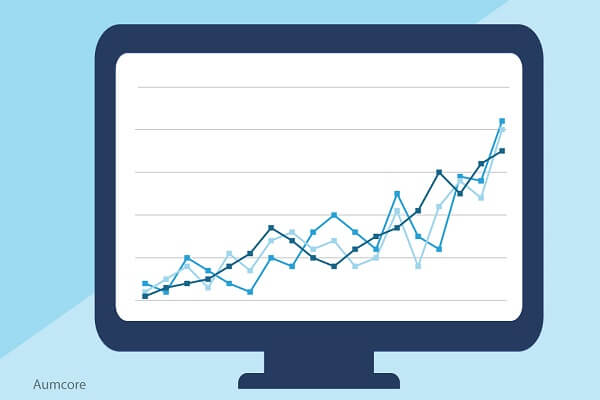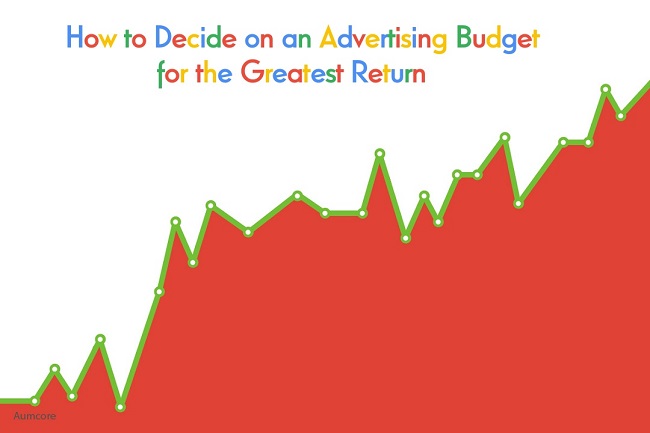Living in 2019 means that pretty much everything is digital. Your business is digital, your audience is digital, and your strategies are digital. Likewise, this digital ecosystem means that owning a business in 2019 is more cutthroat than ever before. Why? Because we live in a time when new competitors not only can, but definitely are popping up left and right, up and down, and pretty much everywhere. In other words, because digital technologies are facilitating the steps required to actually start a business, you have to put a lot more work in your efforts to be found and heard. In translation, this means that marketing, particularly advertising, is no longer an option, it’s a necessity.
Digital Advertising in 2019
With AI and automation, personalization, cross-channel advertising and a variety of other advertising trends for 2019, we’re seeing that advertising is bigger than ever. In fact, digital ad spend is expected to represent a majority of all US ad spend, increasing from $105.44 billion (46.56%) in 2019 to $129.26 billion (51.31%) by 2021. The thing is, marketing, particularly advertising, is expensive. No matter what you’re planning on doing, real results equates to higher expenses.
Related Post:10 Paid Advertising Trends You Should Follow in 2019
For this reason, you need to make sure that you’re getting the most from your digital advertising efforts. Key here is knowing how much to spend and where so you don’t end up metaphorically putting all your eggs in the wrong basket. Along a similar vein, you don’t want to split your funds evenly between all channels, which just so happens to be a good advertising budget example of what you should not do. This is because evenly dividing your budget assumes that all channels work the same and deliver comparable results, which is far from the truth. In actuality, more of your audience may be present on channel A than channel B, meaning that your returns will likely be higher there.
And thus we return to our point of making sure you’re getting the most from your ads. To this end, you’re going to need a marketing budget breakdown to determine what you can actually afford to spend on advertising, and then an analysis to figure out how much you can devote to each channel.
Your Advertising Budget Allocation Guide
Our goal for today is to cover an advertising budget allocation guide and varying advertising budget methods to determine the best advertising budget for a small business. More specifically, we’re going to go over a three-step process to narrow down on how much you should allocate toward advertisements for the greatest return.
Advertising Budget Process Step 1: Decide What You Can Spend
Whenever you have to allocate a budget for something—it doesn’t matter what it is—you first have to determine how much you can actually afford to invest. For our discussion today, economists suggest using a percentage of revenue approach in which you devote a percentage of your overall gross revenue into your marketing efforts. Even though there are many factors affecting an advertising budget, such as your industry, business size and growth stage, this approach works well across the board because the budget isn’t actually fixed; it’s set up to wax or wane with your revenue so you can increase as you grow or cut back to maintain long-term profitability.
Related Post:The Importance of Artificial Intelligence and Automation in Paid Marketing
For newer companies that are trying to grow, it’s recommended to spend between 10% and 20% so you can truly brand yourself, with 12% being the minimum if you’re trying to grow fast. If you’re more established and still want to increase profitability, 5-12% will be a good target, as you should already have loyal clients and a set marketing strategy to carry you through. If, on the other hand, you’re either barely making it by or are operating at a loss, it may not even be feasible to allocate 5%. Then again, you have to remember that marketing is a must for growth. As people always say, you have to spend money to make money.
Advertising Budget Process Step 2: Choose the Platforms You Want to Target and Consider the Costs
With a marketing budget on hand, it’s time to choose the channels you want to target. Keep in mind that this encompasses all of your marketing efforts, not just advertising. With that in mind, you’re going to have to do some research to figure out your audience’s preferred channels, which is where you’re going to focus on. For example, some common channels include:
- Email marketing
- Content marketing
- Influencer marketing
- Social media marketing —> general marketing and social ads like Facebook Ads, Instagram Ads, Promoted Pins, and LinkedIn Ads
- Search engines —> SEO and search ads like Google Ads or Bing Ads
As part of this step, you have to be as specific as possible. That is to say, don’t just say ‘social media’ or ‘content marketing.’ Instead, specify specific channels like Facebook and Instagram, and content marketing activities like blog writing and video production. You also have to consider the potential costs and returns of each channel, as some may have high costs and equally high returns, while other have high costs with average returns. Additionally, you should also look into hidden costs that will impact your overall ROI, such as the additional expense of hiring a PPC agency or buying analytics tools to track your progress.

Advertising Budget Process Step 3: Divide Your Budget
Finally, it’s time to divide your budget between all your channels. As you begin the allocation process, rest assured knowing that this is going to be easier than you may have previously thought because you already did most of the work in the previous steps. For this one, use your allocated marketing budget in conjunction with your list of channels and their expected costs (including the hidden ones) to determine which has the potential for the greatest return.
Final Thoughts
Deciding on a profitable advertising budget will never be as easy as simply drawing a line and divvying things evenly. Sure, you can definitely do this and make things a bit easier for you in that moment, but you’re not going to see the results you want, much less need. Because of this, deciding on an ad budget for the greatest return is actually more akin to a balancing act that takes everything into consideration.





Tell us your thoughts in the comments